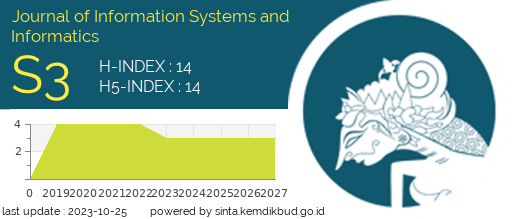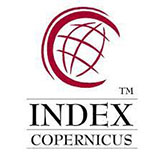Understanding the Influence of Cybercrime Law Absence on Cyberbullying in Higher Institutions of Learning: A Case of the International University of Management
Abstract
Cyberbullying is a serious problem that can have a significant negative impact on victims, including depression, anxiety, low self-esteem, and even suicidal thoughts. The absence of cybercrime laws can make it difficult to prosecute cyberbullying cases, which can contribute to the problem. The purpose of this study was to understand the influence of the absence of a cybercrime law on cyberbullying in higher institutions of learning. The study focused on the International University of Management (IUM) in Namibia. The study used mixed methods research design. Data was collected through an online questionnaire comprising both quantitative and qualitative questions. The link to the questionnaire was shared with students, as well as academic and administrative staff at IUM. The study found that the absence of a cybercrime law contributes to the problem of cyberbullying in IUM. The study also found that that there are a number of factors that contribute to cyberbullying in IUM, such as the use of social media, the anonymity that the internet provides, and the lack of awareness of cyberbullying among students and staff. The findings of the study have implications for policymakers, educators, and parents. Policymakers need to enact cybercrime laws to help prevent and prosecute cyberbullying cases. Educators need to educate students about cyberbullying and how to deal with it. Parents need to talk to their children about cyberbullying and monitor their online activity.
Downloads
References
S. Hinduja and J. W. Patchin, Cyberbullying: A guide to research and prevention, 4th ed. Routledge, 2022.
R. M. Kowalski, S. P. Limber, and P. W. Agatston, Cyberbullying: Bullying in the digital age, 3rd ed. Routledge, 2020.
J. Wang, Y. Wang, and L. Zhang, ‘Cyberbullying in China: A review of the literature’, Cyberpsychol Behav Soc Netw, vol. 24, no. 8, pp. 515–520, 2021.
Joanna Lizut, ‘Cyberbullying Victims, Perpetrators, and Bystanders’, in Cyberbullying and the Critical Importance of Educational Resources for Prevention and Intervention, 2019, p. 29.
M. Samara, V. Burbidge, A. El Asam, M. Foody, P. K. Smith, and H. Morsi, ‘Bullying and cyberbullying: Their legal status and use in psychological assessment’, Int J Environ Res Public Health, vol. 14, no. 12, Dec. 2017, doi: 10.3390/ijerph14121449.
J. Raskauskas and A. Stoltz, ‘Cyberbullying: A review of the literature’, J Sch Psychol, vol. 45, no. 3, pp. 375–400, 2007.
A. Peker and M. N. Yildiz, ‘Mediating Role of Self-Control in the Relationship between Aggressiveness and Cyber Bullying’, 2021. doi: doi:10.5455/PBS.20210114051215.
S. Acharjee, ‘Cyberbullying and the law: A global perspective’, Springer Nature, 2021.
T. Brush, A. Bolin, and K. Lewis, ‘Cyberbullying in higher education: A review of the literature’, Journal of Educational Computing Research, vol. 58, no. 6, pp. 1131–1158, 2021.
Nashuuta Lahya and Southern-Times, ‘Cybercrime policies/strategies. Accessed: May 18, 2022.
Links Frederico, ‘Familiar-Flaws-MHRC-Feb-2022 Cycbercrime bill Namibia’, IPPR - The Institute for Public Policy Research, 2022.
M. Rao, R. Sundaram, and D. Williams, ‘Cyberbullying in India: A review of the literature.’, Cyberpsychology, Behavior, and Social Networking, vol. 21, no. 3, pp. 162–169, 2018.
R. S. Tokunaga, ‘Following you home: Online harassment by former romantic partners’, J Interpers Violence, vol. 25, no. 12, pp. 1942–1966, 2010.
Moseholm Ellen and Fetters Michael D, ‘Conceptual models to guide integration during analysis in convergent mixed methods studies’, SAGE, vol. 10, no. 2, 2017.
 Abstract views: 1824 times
Abstract views: 1824 times Download PDF: 1110 times
Download PDF: 1110 times
Copyright (c) 2024 Journal of Information Systems and Informatics

This work is licensed under a Creative Commons Attribution 4.0 International License.
- I certify that I have read, understand and agreed to the Journal of Information Systems and Informatics (Journal-ISI) submission guidelines, policies and submission declaration. Submission already using the provided template.
- I certify that all authors have approved the publication of this and there is no conflict of interest.
- I confirm that the manuscript is the authors' original work and the manuscript has not received prior publication and is not under consideration for publication elsewhere and has not been previously published.
- I confirm that all authors listed on the title page have contributed significantly to the work, have read the manuscript, attest to the validity and legitimacy of the data and its interpretation, and agree to its submission.
- I confirm that the paper now submitted is not copied or plagiarized version of some other published work.
- I declare that I shall not submit the paper for publication in any other Journal or Magazine till the decision is made by journal editors.
- If the paper is finally accepted by the journal for publication, I confirm that I will either publish the paper immediately or withdraw it according to withdrawal policies
- I Agree that the paper published by this journal, I transfer copyright or assign exclusive rights to the publisher (including commercial rights)






















_1.png)












